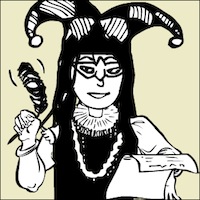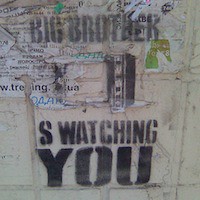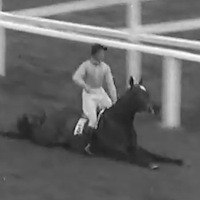Hogmanay - The Scottish New Year Festival

December 31, 11:59 p.m. and 50 seconds. The countdown begins, and moments later: HAPPY NEW YEAR!! Revelers are bound to break into that Scottish classic, “Auld Lang Syne.” The party might go on till dawn, but if you’re at home, it’ll probably start to wind down because New Year’s Day is the last holiday of the season, and you wouldn’t want to waste it catching up on sleep after staying up all night. Then the season’s over and it’s back to work … unless you live in Scotland, the home of Hogmanay.
It’s pronounced exactly as it looks, with the stress on the first syllable, but it has nothing to do with swine. For the people who gave us “Auld Lang Syne,” Hogmanay celebrates the last night of the year and goes on until January 2, a holiday in Scotland. Clearly, it’s the place to be for New Year’s.
The festivities might even start earlier. In Edinburgh’s Hogmanay, now in its 23rd year, the 2015 Torchlight Procession will start on December 30. This festival opener is exactly what it sounds like – a walk, carrying burning sticks, through the capital city – creating what the Visit Scotland website calls “a river of fire.” Participants are rewarded with a fireworks finale at their destination. The following day, they can enjoy concerts and movies, live music and entertainment in what’s billed as the world’s biggest outdoor street party, and a traditional ceilidh (pronounced “kay-lee”). The 2015 Old Town Ceilidh promises not only dancing and singing as usual, but also an attempt to set a world record for the biggest “Strip the Willow,” a Scottish country dance. Hourly fireworks will start from 9 p.m., with the last one dubbed the Midnight Moment. As the brochure proclaims, “Why welcome 2016 with just one fireworks display when you can have FOUR spectacular displays in one night!” Why, indeed.
The countdown is called “bringing in the bells,” and of course it brings along the tune often attributed to the country’s national poet. Yes, Robert Burns wrote “Auld Lang Syne” in 1788, but his five-verse song is partly a collection of traditional fragments, and he may have set it to a different tune than the one we sing now. Nonetheless, the singing of “Auld Lang Syne” to the tune of Roud Folk Song #6294 was a Hogmanay custom that went universal. Most of us only know the opening verse and the chorus, but traditionally, we’re supposed to cross our arms and hold hands for the final verse. At the end of the song, says scotland.org, everyone should rush to the center while still holding hands. That should get the party back on track after bemoaning old times long since gone.
Fiery customs
And how the party goes on.
The most impressive Hogmanay custom is probably fireball swinging, a feature of Stonehaven in the northeast. A fireball consists of old newspaper, wood, rags, and other flammables wrapped in chicken wire. Weighing up to 20 pounds (10 kg), this is attached to a long pole or chain, and swung around the body as the swinger walks up and down High Street. Any fireball still burning at the end of the performance is hefted into the harbor – putting the Times Square ball drop to shame, frankly. Watch videos of this amusing spectacle at stonehavenfireballs.co.uk.
Dating back to pre-Christian times, Hogmanay’s fiery customs represent the sun returning after the winter solstice and purifying the world by consuming evil spirits. The highland village of Comrie represents this with eight torches, often more than 10 feet (3 m) tall, in its Flambeaux Procession. In Biggar, residents prepare for the Bonfire by piling up all manner of dry kindling, including old doors, in the town square. Watch the 2015 pile get bigger at biggarbonfire.co.uk, which also features pictures dating back to 2003.
Immediately after the bells also comes the First Footing. Anytime after midnight, if the first person to set foot in your house is a tall, dark stranger, it’s a sign of a prosperous new year. This is because fair hair is a reminder of Viking invaders. Even better if your brunette visitor’s gifts include a lump of coal to add to your fire, shortbread, and whisky to toast the year. You might add ale and nutmeg to that liquor to make Het Pint and then exchange gifts of “Hogmananys,” suggests hogmanay.net.
Mysterious origins
No single origin can been traced to the word “Hogmanay,” but the Jan. 5, 1940, edition of the Townsville Daily Bulletin quotes from The Weekly Scotsman to get to the bottom of the mystery. The newspaper is reproduced on the National Library of Australia’s Trove website. Apparently, “young folk” would visit households to recite a good-luck rhyme for the upcoming year. Their leader was dressed in a mantle of thick cowhide, and the group would hit him with sticks, shouting, “Thog mi ’n eugh!” This means “I raised the cry!” in Scots Gaelic and is pronounced “Hogmanay!” Those who welcomed these kids and received their blessings offered them “eatables” in return.
It may sound like trick-or-treating, but Hogmanay’s customs are taken from those of Christmas, says the Huddersfield Chronicle of Jan. 2, 1890. For example, people were expected to give to the poor and give their servants or employees time off. However, young folk also went guising or “gyzing,” wearing masks and visiting their friends at night. Singing, dancing, acting, and general merrymaking ensued, and, “under cover of darkness, and with the freedom of a perfect or even doubtful disguise, and stimulated besides by the hilarious spirit of the season,” guising “occasionally ran to licentious lengths in both speech and action.” Not exactly Christmassy, but it certainly does sound like New Year’s Eve. You can read this and other articles on Hogmanay on the British Newspaper Archive website.
Due to Scotland’s history, pagan winter festivals contributed as much to Hogmanay as Christianity. This is true for the whole festive season, since the Roman Saturnalia evolved into Christmas, and the Scandinavian Yule became the 12 days thereof. However, after the 16th-century Protestant Reformation, Christmas was considered “too Papist” in Scotland and thus struck off the calendar. So people went in to work that day and took their midwinter break a week later. Only in the 1950s did Christmas become a holiday, no doubt due to its commercial appeal. Thanks to the 400-year head start, however, Hogmanay is still a bigger holiday for Scots.
On New Year’s Day, when most people are gearing up to get back to work, Scotland’s party animals probably start by digging into a full breakfast: sausage, bacon, eggs, tattie (potato) scones, fried mushrooms, grilled tomatoes, baked beans, buttered toast, and black pudding, according to Visit Scotland. Those feeling industrious at home may continue cleaning and decluttering the house, which they may have started the previous day. Those in the capital probably look forward to the Loony Dook, the annual plunge into the freezing River Forth in fancy dress – possibly the very same one from the previous night.
The 2015/16 Hogmanay at Edinburgh is not just carefree carousing, however. The organizers are helping to raise funds for Unicef’s work to protect children in danger, such as those affected by the Syrian war. That’s definitely a noble gesture, and an excellent way to bring in the new year.
It’s pronounced exactly as it looks, with the stress on the first syllable, but it has nothing to do with swine. For the people who gave us “Auld Lang Syne,” Hogmanay celebrates the last night of the year and goes on until January 2, a holiday in Scotland. Clearly, it’s the place to be for New Year’s.
The festivities might even start earlier. In Edinburgh’s Hogmanay, now in its 23rd year, the 2015 Torchlight Procession will start on December 30. This festival opener is exactly what it sounds like – a walk, carrying burning sticks, through the capital city – creating what the Visit Scotland website calls “a river of fire.” Participants are rewarded with a fireworks finale at their destination. The following day, they can enjoy concerts and movies, live music and entertainment in what’s billed as the world’s biggest outdoor street party, and a traditional ceilidh (pronounced “kay-lee”). The 2015 Old Town Ceilidh promises not only dancing and singing as usual, but also an attempt to set a world record for the biggest “Strip the Willow,” a Scottish country dance. Hourly fireworks will start from 9 p.m., with the last one dubbed the Midnight Moment. As the brochure proclaims, “Why welcome 2016 with just one fireworks display when you can have FOUR spectacular displays in one night!” Why, indeed.
The countdown is called “bringing in the bells,” and of course it brings along the tune often attributed to the country’s national poet. Yes, Robert Burns wrote “Auld Lang Syne” in 1788, but his five-verse song is partly a collection of traditional fragments, and he may have set it to a different tune than the one we sing now. Nonetheless, the singing of “Auld Lang Syne” to the tune of Roud Folk Song #6294 was a Hogmanay custom that went universal. Most of us only know the opening verse and the chorus, but traditionally, we’re supposed to cross our arms and hold hands for the final verse. At the end of the song, says scotland.org, everyone should rush to the center while still holding hands. That should get the party back on track after bemoaning old times long since gone.
Fiery customs
And how the party goes on.
The most impressive Hogmanay custom is probably fireball swinging, a feature of Stonehaven in the northeast. A fireball consists of old newspaper, wood, rags, and other flammables wrapped in chicken wire. Weighing up to 20 pounds (10 kg), this is attached to a long pole or chain, and swung around the body as the swinger walks up and down High Street. Any fireball still burning at the end of the performance is hefted into the harbor – putting the Times Square ball drop to shame, frankly. Watch videos of this amusing spectacle at stonehavenfireballs.co.uk.
Dating back to pre-Christian times, Hogmanay’s fiery customs represent the sun returning after the winter solstice and purifying the world by consuming evil spirits. The highland village of Comrie represents this with eight torches, often more than 10 feet (3 m) tall, in its Flambeaux Procession. In Biggar, residents prepare for the Bonfire by piling up all manner of dry kindling, including old doors, in the town square. Watch the 2015 pile get bigger at biggarbonfire.co.uk, which also features pictures dating back to 2003.
Immediately after the bells also comes the First Footing. Anytime after midnight, if the first person to set foot in your house is a tall, dark stranger, it’s a sign of a prosperous new year. This is because fair hair is a reminder of Viking invaders. Even better if your brunette visitor’s gifts include a lump of coal to add to your fire, shortbread, and whisky to toast the year. You might add ale and nutmeg to that liquor to make Het Pint and then exchange gifts of “Hogmananys,” suggests hogmanay.net.
Mysterious origins
No single origin can been traced to the word “Hogmanay,” but the Jan. 5, 1940, edition of the Townsville Daily Bulletin quotes from The Weekly Scotsman to get to the bottom of the mystery. The newspaper is reproduced on the National Library of Australia’s Trove website. Apparently, “young folk” would visit households to recite a good-luck rhyme for the upcoming year. Their leader was dressed in a mantle of thick cowhide, and the group would hit him with sticks, shouting, “Thog mi ’n eugh!” This means “I raised the cry!” in Scots Gaelic and is pronounced “Hogmanay!” Those who welcomed these kids and received their blessings offered them “eatables” in return.
It may sound like trick-or-treating, but Hogmanay’s customs are taken from those of Christmas, says the Huddersfield Chronicle of Jan. 2, 1890. For example, people were expected to give to the poor and give their servants or employees time off. However, young folk also went guising or “gyzing,” wearing masks and visiting their friends at night. Singing, dancing, acting, and general merrymaking ensued, and, “under cover of darkness, and with the freedom of a perfect or even doubtful disguise, and stimulated besides by the hilarious spirit of the season,” guising “occasionally ran to licentious lengths in both speech and action.” Not exactly Christmassy, but it certainly does sound like New Year’s Eve. You can read this and other articles on Hogmanay on the British Newspaper Archive website.
Due to Scotland’s history, pagan winter festivals contributed as much to Hogmanay as Christianity. This is true for the whole festive season, since the Roman Saturnalia evolved into Christmas, and the Scandinavian Yule became the 12 days thereof. However, after the 16th-century Protestant Reformation, Christmas was considered “too Papist” in Scotland and thus struck off the calendar. So people went in to work that day and took their midwinter break a week later. Only in the 1950s did Christmas become a holiday, no doubt due to its commercial appeal. Thanks to the 400-year head start, however, Hogmanay is still a bigger holiday for Scots.
On New Year’s Day, when most people are gearing up to get back to work, Scotland’s party animals probably start by digging into a full breakfast: sausage, bacon, eggs, tattie (potato) scones, fried mushrooms, grilled tomatoes, baked beans, buttered toast, and black pudding, according to Visit Scotland. Those feeling industrious at home may continue cleaning and decluttering the house, which they may have started the previous day. Those in the capital probably look forward to the Loony Dook, the annual plunge into the freezing River Forth in fancy dress – possibly the very same one from the previous night.
The 2015/16 Hogmanay at Edinburgh is not just carefree carousing, however. The organizers are helping to raise funds for Unicef’s work to protect children in danger, such as those affected by the Syrian war. That’s definitely a noble gesture, and an excellent way to bring in the new year.
You Should Also Read:
A History of New Year’s Day
New Year’s Eve Party Recipes
Australia celebrates New Year’s Eve

Related Articles
Editor's Picks Articles
Top Ten Articles
Previous Features
Site Map
Content copyright © 2023 by Lane Graciano. All rights reserved.
This content was written by Lane Graciano. If you wish to use this content in any manner, you need written permission. Contact Lane Graciano for details.







